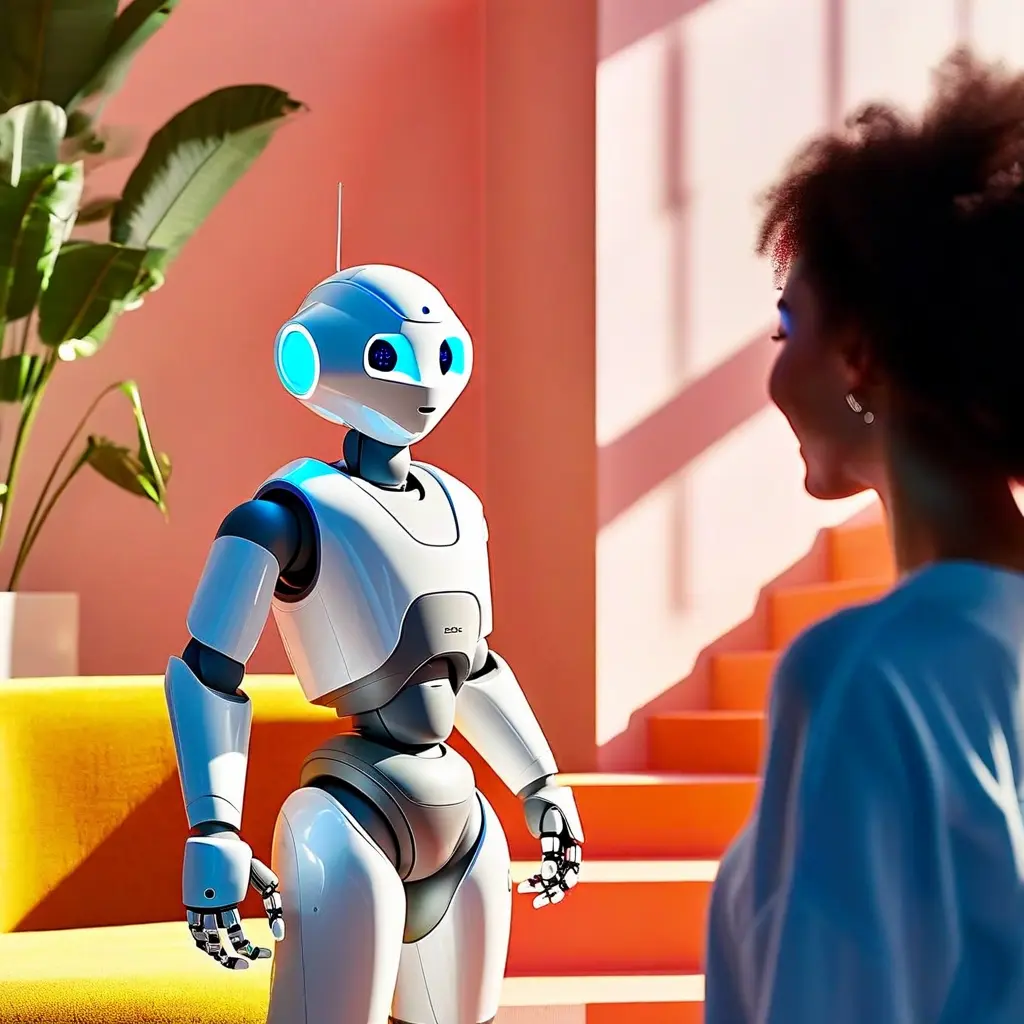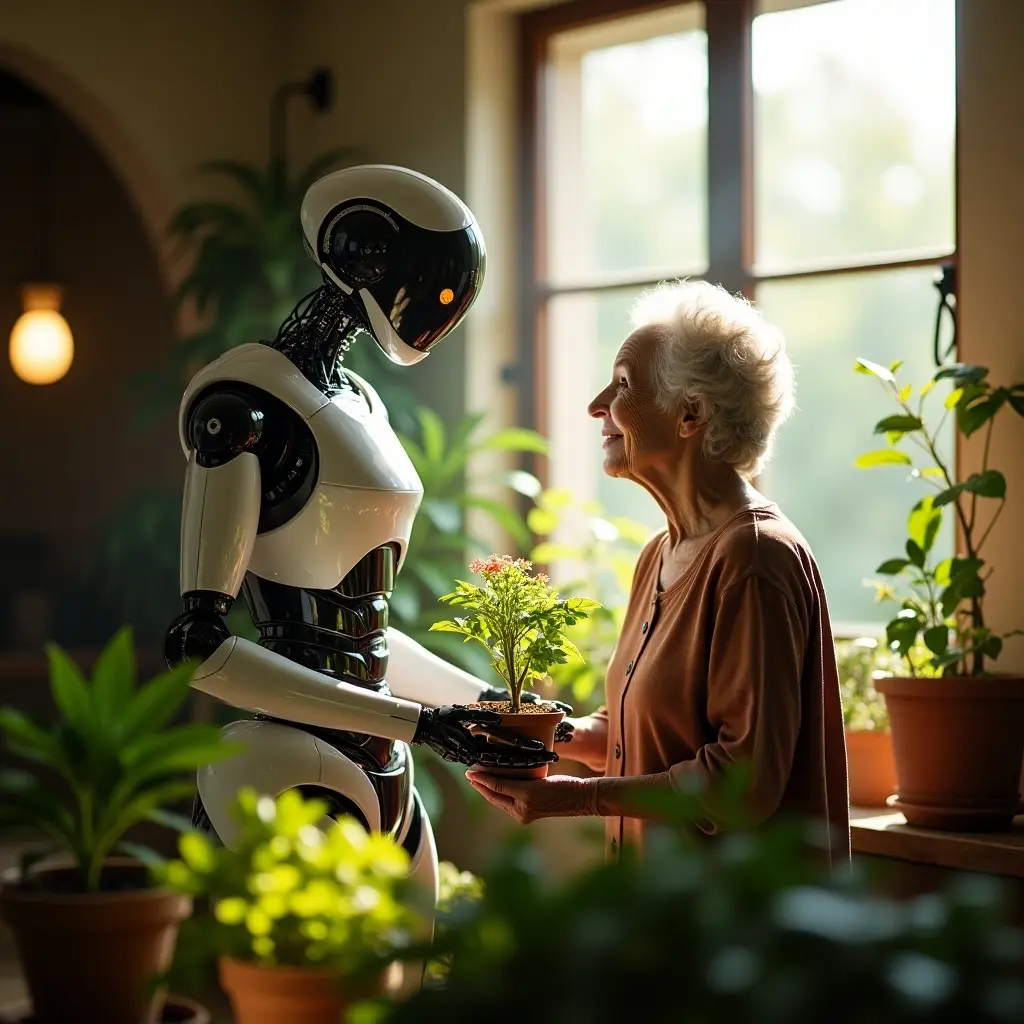Welcome to the Age of Empathetic Technology
Imagine a friend who listens without judgment, remembers your preferences, and offers comfort on your worst days — that’s the promise of AI in 2025. In today’s rapidly evolving digital world, artificial intelligence (AI) isn’t a distant concept anymore. It’s present in our pockets, homes, and conversations. Yet, one of its most profound developments lies in AI robots designed for companionship.
What Exactly Are AI Robots?
AI robots are advanced machines embedded with software that mimics human intelligence. Unlike basic automated bots, these robots leverage machine learning, speech recognition, and emotional analytics to provide engaging, lifelike interactions.
From robotic pets to humanoid friends, they’ve evolved far beyond factory floors. For instance, they can recognize your voice, sense your mood, and even adapt their behavior based on your emotions.

How AI Robots Are Revolutionizing Human Companionship
Emotional Support for a Lonely World
Increasingly, people around the globe face loneliness, especially older adults and individuals with disabilities. AI robots can step in as emotionally supportive companions.
Take Paro, the therapeutic seal robot, it responds to voice and touch, soothing users in nursing homes and hospitals. Its presence has shown to lower stress and lift spirits.
Practical Help for Daily Tasks
Besides emotional warmth, these robots also act as daily assistants. They can set reminders, check your calendar, or control your smart home — all hands-free.
For example, a user with limited mobility can instruct a robot to turn off the lights or call emergency services, offering safety and autonomy.
Top AI Robots You Should Know About
- Sony’s Aibo
Aibo is more than a robotic dog, it learns, grows, and bonds like a real pet. Over time, it develops unique behavior, making each user’s experience one-of-a-kind. - Hanson Robotics’ Sophia
Sophia has captured global attention with her life like appearance and conversational skills. As a humanoid robot, she showcases the future of interactive AI. - Jibo
Though no longer manufactured, Jibo was a pioneer of social robots. It danced, told stories, and even remembered faces leaving behind a legacy in human-robot interaction.

Choosing the Perfect AI Companion
Before purchasing your AI friend, consider these factors:
1. Purpose
Want emotional bonding or smart home control? Your goal will influence your robot of choice.
2. Budget
Prices range from $300 robotic pets to $10,000 humanoids. Set realistic expectations before shopping.
3. Features
Do you want facial recognition, speech adaptation, or autonomous mobility? Prioritize the features that matter most to you.
4. Compatibility
Ensure your robot works seamlessly with your smart home ecosystem or mobile devices.
Trends Shaping the Future of AI Companionship
The future of AI robots is more exciting than ever. Here’s what we can expect soon:
- Smarter Emotional Understanding
Robots will detect emotional nuances better, helping them respond in comforting and personalized ways. - Hyper-Personalization
AI will learn your routines, likes, and habits to tailor conversations and suggestions uniquely. - Greater Mobility
More fluid and lifelike movement will make robots even more helpful in everyday tasks. - Wider Social Connectivity
Expect robots to sync with social platforms and home devices for a more holistic experience.
How to Keep Your AI Robot in Top Shape
Just like a smartphone, your AI companion needs upkeep:
- Regularly update its software.
- Clean lenses and sensors for accurate facial and object detection.
- Interact frequently so the AI learns your behavior and improves responses.
- Follow manufacturer care guidelines for battery health and safe storage.
Why AI Robots Are More Than Gadgets
In 2025, these robots represent more than just tech marvels — they’re emotional anchors, intelligent assistants, and futuristic companions rolled into one.
They aren’t here to replace human connections but to enhance them, especially when distance, isolation, or disabilities create barriers.
Thoughts!
The world of AI robots is no longer futuristic fiction it’s a present-day reality that’s only becoming more intelligent and empathetic. Whether you’re seeking emotional connection or smart support, AI companions offer possibilities once reserved for sci-fi.






